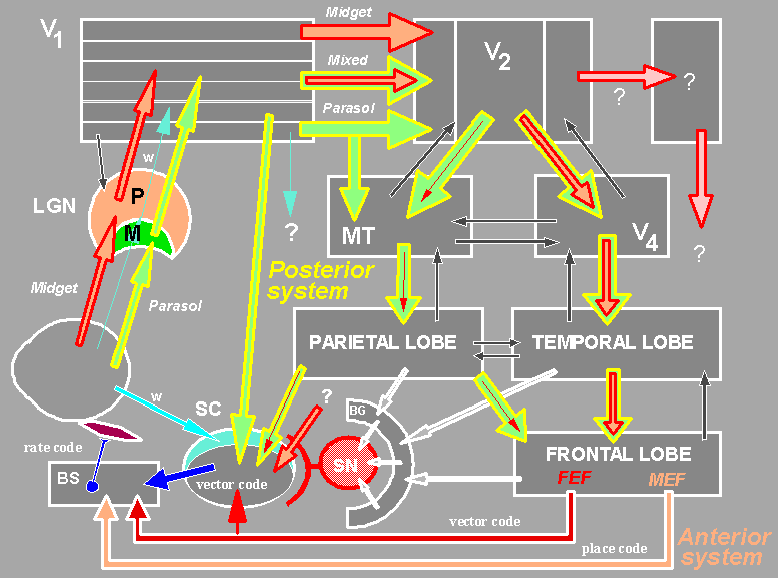The Neural
Control of Visually Guided Eye Movements
C. Cortical Mechanisms of Visually Guided Saccadic Eye Movements
Here we show a schematic wiring diagram of the
circuits involved in the generation of visually guided saccadic eye movements.
As noted earlier, in the retina several distinct classes of ganglion cells
originate. Three of these are depicted in the diagram, the midget system,
the parasol system and the w system. The w system
sends direct connections to the superior colliculus as well as to the
LGN. Little is known at this stage about the cortical circuitry of this
system.

The midget and parasol systems have both separate and combined components
in the projections from V1 to higher centers. The processing stream through
MIT to the parietal lobe is dominated by the parasol system whereas the
stream through V4 to the temporal and parietal lobes is mixed. The interaction
between the midget and parasol systems is further enhanced by the plethora
of reciprocal connections among the various cortical areas. The projections
to the superior colliculus from V1, however, is driven exclusively by
the parasol system.
The generation of visually guided eye movements involves two major systems,
the anterior and the posterior. The anterior system consists of
direct connections from the cortex to the brainstem the most prominent
of which are from the frontal and medial eye fields. The posterior
system is comprised of connections from the cortex through the superior
colliculus to the brainstem.
Inhibitory circuits play a central role in visually guided saccadic
eye-movement generation. Two of several such circuits is shown, one from
cortex through the substantial nigra and the other intracortical circuitry
in the frontal eye fields. Both excitatory and disinhibitiotory activity
is central for the production of accurate and rapid saccadic eye movements.
|
